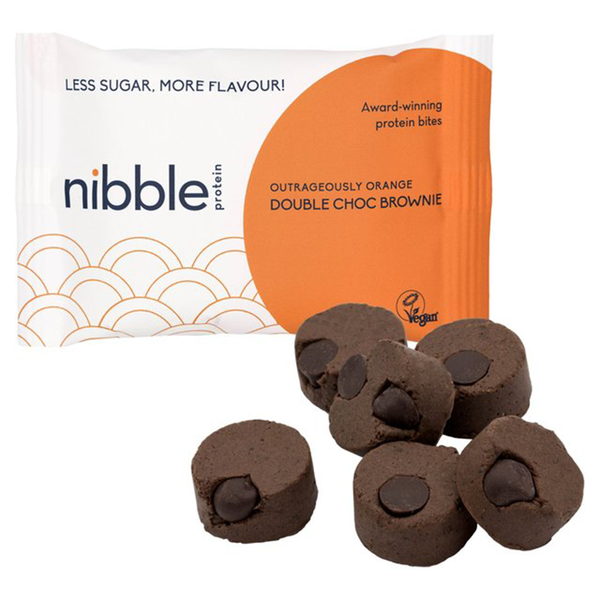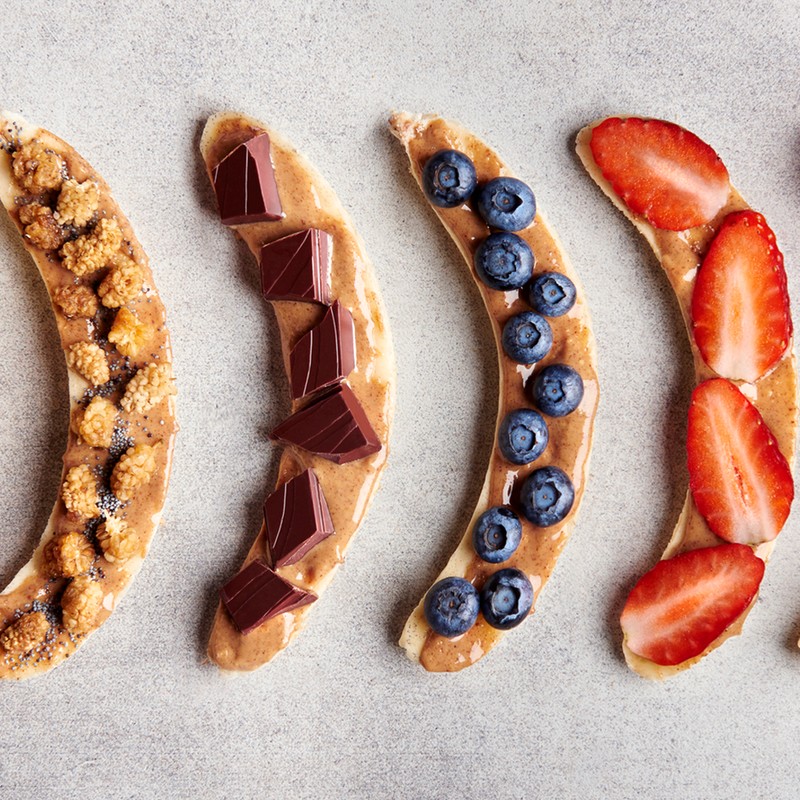A Nutritionists’ Guide To Snacking
Avoid Mindless Grazing
When done well, snacking can balance out blood sugar and help you refuel after a workout, but the worst type of snacking is done constantly throughout the day, says nutritionist Kim Pearson. “The ‘little and often’ approach to eating used to be widely accepted as the optimal way of eating, but nutrition understanding has evolved and we now know constant grazing isn’t great. Snacking can be helpful if you have a gap of several hours between lunch and dinner, or if you’re doing an intense workout and need to refuel, but it’s far more important to eat well-structured meals providing protein, healthy fat and fibre.”
Kim says it's this combination that will leave you satisfied. “For most people, meals shouldn’t leave you feeling hungry two or three hours later. A well-structured meal should see you through four or five hours.” If you feel the urge to snack an hour after breakfast or lunch, look at what you’re eating at mealtimes, particularly when it comes to protein and healthy fats.
Listen To Your Body
Experts agree there are a few factors that influence our snacking behaviours. “Not everyone needs to snack,” says nutritionist Pippa Campbell. “For most people, if they eat three good, nutritious meals, there is no need to snack. However, if you have low blood sugar and get shaky before meals then snacking is a good idea.”
Registered nutritionist Emma Moross agrees. “A balanced snack can maintain blood sugar levels, which helps keep energy levels and hunger stable, preventing that dreaded 3pm crash when you may reach for caffeine and sugar.” Emma adds there are some people who’ll need to snack more than others. “Everyone has a slightly different metabolism, and some people’s blood sugar can dip much more than others. If you exercise a lot, you may also need more snacks as you burn more calories that need to be replenished.”
Learning the difference between physical and emotional hunger is also key, says Kim. “So many of us snack out of habit or because we’re bored. Of course, there are occasions when we may want to eat if we aren’t hungry, such as a slice of birthday cake in the office, but it’s important to be aware of habitual snacking for reasons other than genuine hunger.”
Read The Label
“Avoid anything with added sugar or refined carbs,” advises Pippa. “If in doubt, read the label. If you don’t recognise an ingredient, put it back on the shelf. Also be wary of anything that contains artificial sweeteners, which are essentially chemicals not food, and can affect your gut bacteria. Even something deemed healthy, such as Actimel yoghurt drinks, can contain added sugar and artificial sweeteners.”
The exception is xylitol, adds Kim, which is a natural sweetener and often used in healthy snack bars. “If you’re trying to cut down on sugar, find the total number in grams for the serving size you are going to eat, then divide this by four to work out how many teaspoons of sugar there are per serving. Some of the worst ‘healthy’ offenders include GoAhead bars, Alpen bars and NutriGrain bars. GoAhead bars, for example, are highly processed, containing around 30 ingredients, and contain 30g of sugar per 100g – according to the NHS, this is a ‘high sugar’ food.”
Always Include Protein
Whether it’s a spoon of nut butter with a couple of oatcakes or a handful of nuts with a piece of fruit, pairing protein with healthy fats and carbs is the secret to a savvy snack. “This is a great way to structure your snacks,” says Paola Langella, integrative nutrition coach and Pilates instructor. “The healthiest snack everyone knows is a piece of fruit – not only will it satisfy your sweet tooth, it will also give you the vitamins and minerals you need. Pair this with some full-fat yoghurt or some nuts for a rounded snack. Dark chocolate is a great one to keep in your bag – it’s a good source of fat, carbs and protein.”
Pippa is also a fan of protein-based snacks, and advises her clients to choose a snack with a 2:1 protein to carb ratio. “Nuts, seeds, an egg, a slice of chicken, tin of salmon, hummus and veg sticks are all good options. If you’re on the go, keto protein bars are great as they’re naturally low in sugar – Keto Hana and Kimmel Life are brands to try.”
Choose Something Crunchy
If the urge to snack strikes, go crunchy, says Paola. “The crunchy feeling can satisfy cravings when we’re tired and bored at our desks. Try having a bowl on your desk or kitchen table with fresh fruit and carrot sticks. If you have a fridge at work, stock it with hummus and a dairy-free or Greek yoghurt, which mean you’ll be less tempted to buy something naughty,” she says.
Emma is also fan of popcorn when it comes to the crunch factor. “Propercorn is a great healthy snack brand. Plain or lightly salted popcorn is incredibly high in fibre and will keep you full. Wholegrain rice cakes topped with nut butter is also a good option, while a handful of almonds (around 23) is a nutrient-rich option.” But when it comes to healthy crisps, it pays to read the label closely. “The majority of healthy crisps made with vegetables and grains are actually processed and not that different from regular potato chips.”
Kim Recommends…
“Olives are rich in healthy fats and antioxidants – try Oloves for a handy portable option.”




Emma Recommends…
“Have a snack when you start to feel peckish rather than waiting until you’ve crashed – this will keep energy and hunger levels stable.”


Pippa Recommends…
“Be wary of anything that contains dried fruit. Many bars that are labelled healthy contain far too much dried fruit and very little protein.”




Paola Recommends…
“If you follow a vegan diet, try to add more protein-rich snacks into your diet – roasted peas and chickpeas are great.”




For more, visit Kim-Pearson.com, EssentiallyEmma.co.uk, PippaCampbellHealth.com. Paola is also the founder of online studio Shapes Studio – visit ShapesStudio.co for more information.
DISCLAIMER: Features published by SheerLuxe are not intended to treat, diagnose, cure or prevent any disease. Always seek the advice of your GP or another qualified healthcare provider for any questions you have regarding a medical condition, and before undertaking any diet, exercise or other health-related programme.
DISCLAIMER: We endeavour to always credit the correct original source of every image we use. If you think a credit may be incorrect, please contact us at info@sheerluxe.com.




